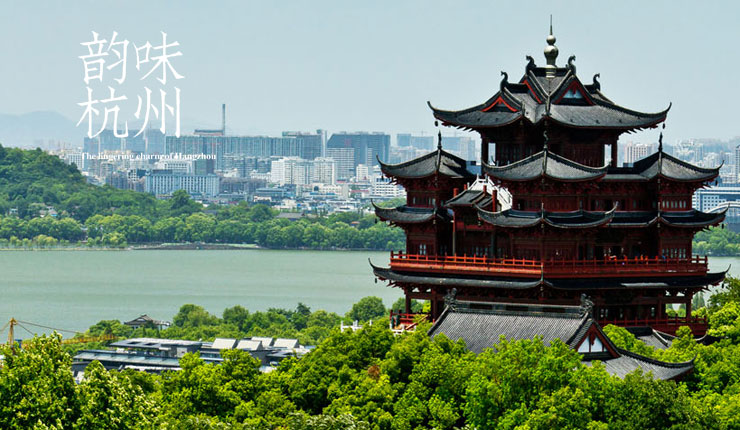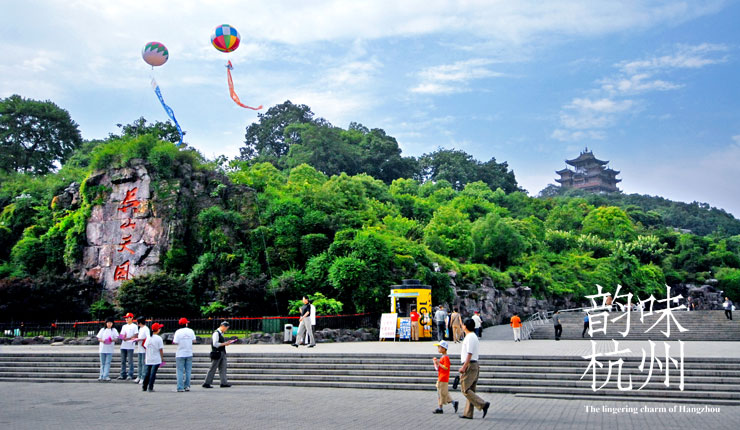Wushan Mountain
Located at the southeast side of the West Lake, 94m-high Wushan Mountain is famous for its beautiful landscape, grotesque rocks, clear springs and wonderful caves. The towering Pavilion of Tutelary on the mountain is an extremely grand sight. There’s a group of rocks in different shapes beside the pass. They are called “Zodiac Rocks” because they look exactly like the twelve Chinese zodiac signs. Jiang Hu Hui Guan (Overall View of the River and the Lake) Pavilion is built on the top of the mountain. Just as the name suggests, you can get an overall view of Qiantang River and West Lake standing in the pavilion. On the road beside the pavilion leading to Yunju (Cloud Resting) Mountain, there’s the relics of Shanmao Taoist Temple. You can see the handwriting of ZHU XI, famous Neo-Confucian scholar in Southern Song Dynasty, which reads “No.1 Peak of Wushan Mountain”. 
The southern border of the State of Wu was formed by a group of hills including Ziyang, Yunju, Jindi, Qingping, Baolian, Qibao, Shifo, Baoyue, Luotuo and Emei in the shape of arc from southwest to northeast during the Spring and Autumn Period. Wushan Mountain is the general name of these hills and ridges. Although Wushan Mountain is not high, it has its own advantages. Since it is located in urban area, tourists can overlook the streets and the lanes in the east, in the north and in the northwest, and look out to the Qiantang River and the flat fields along the riverbanks in the south. Going up Wushan Mountain, you can still feel high up in the air with the whole landscape of Hangzhou in your view.
(Source: Official website of Zhejiang Administration of Cultural Heritage)


- Add:No.1, Yan’an Road (South), Shangcheng District, Hangzhou
- Tel:0571—87012411
- Transportation :Public transport in the urban area of Hangzhou: take Y8, No.25, No.31, No.52 (outer ring), No.59 (inner ring), No.208 or No.216 bus and get off at Wushan Square Stop.
Source:www.ywhangzhou.cn Editor:李如



